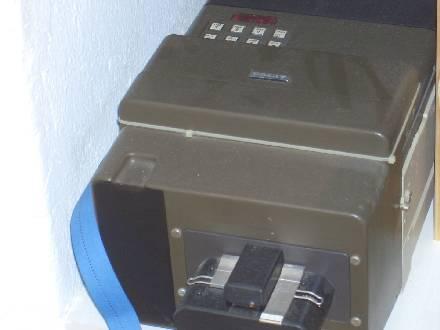OpenVMS, numerical control and electric power in space
The causal relationship between these matters is probably not self-evident at first - or even second - glance, and a connection might appear a tad abstruse. Nevertheless a quite tight connection does exist:
The power supply of about 100 (as of 2010) satellites in Earth's orbit is based upon solar generators whose monocrystalline cells were welded to each other by a machine whose NC production data was processed on a VAX running the OpenVMS operating system and a NC programming system.
The most beautiful aspect about this is theLegacy Hardware
The solar cell welding-machine is now more than 25 years old, but its continued right to exist is justified by its robustness and most notably by its production accuracy. Attempts to replace this machine made for a very special purpose with more modern types failed miserably due to insufficient manufacturing quality for orbital purposes.
The IT devices used for producing NC data are a MicroVAX 3100-85 and Facit
punch tape reader/printer which both are nearly as old as the welding machine,
perhaps just up to five years younger.
NC data is brought from the VAX to the welding machine via paper tape using a
punch tape printer - since the welding machine does not feature an interface
other than a punch tape reader.
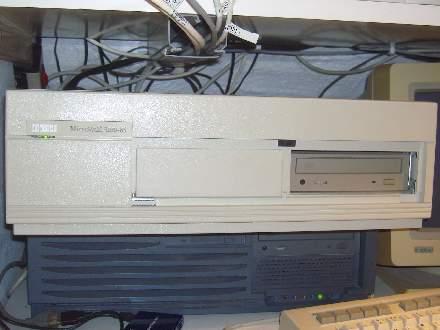
The MicroVAX 3100-85 used to process the data
Since punch tapes need to be verified because of their mechanical production by reading them in again (the print head assembly can lose adjustment), read access is mandatory. Hence a command procedure was implemented for this to stop the queue, to set some required interface parameters and to start a program for reading in the paper tape. As soon as reading the tape is finished, the procedure reverses the aforementioned changes to enable print mode again.
Space flight in the hobby room
The reason why production data for orbital technology emerged from my hobby room since the mid 1990s is a story too long and probably hardly traceable for outsiders. In short, it's the result of hasty decisions made at corporate-level during the Mehdorn era at Deutsche Aerospace (now EADS). The result was a relocation of the solar generator production plant all across Germany causing a loss of the required IT infrastructure onsite.Doodle2Power
The purpose of NC programming is providing a machine tool with data based upon a geometrical description and which it's able to read and execute. The geometrical descriptions shown below emerged from rudimentary sketches from former Daimler-Chrysler Aerospace, now EADS. Orbital projects, especially in the satellite technology area are managed by another group company called Astrium (now EADS space) since quite a few years now.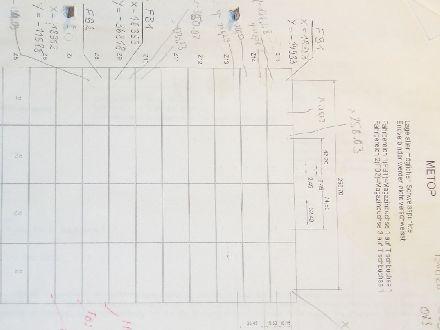
Description of geometrical conditions
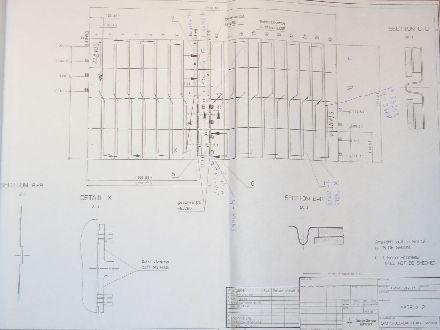
Description of obstacles in platform's travel distance
The geometrical descriptions contain data related to shape and dimensions as well as to obstacles on the platform for the required number of cells, which in the end need to make a generator providing the required power. In short: Nesting, optimization of the traveling distances and piloting the resulting welding points. The computer was of some help here:

Excerpt from the geometrical description - loops for a minimization of efforts.
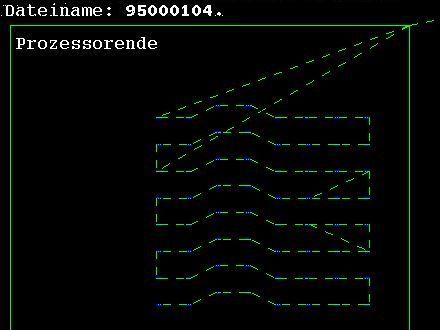
Visualization of the traverse path with welding points
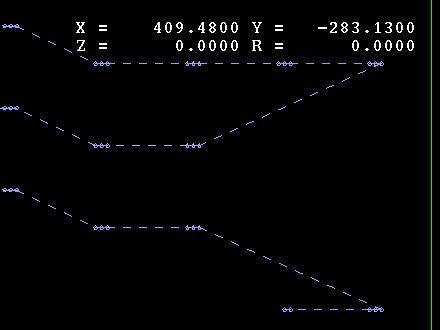
Spot check: Checkup of particular welding points
Running the NC processor results in a NC program which is printed to a paper punch tape. This is read by the solar cell welding-machine which welds the cells to each other forming the generator's panels.
The projects in particular
comprise satellites for various purposes such as research, communication and environmental monitoring as well as weather forecasts and last but not least matters being subject to secrecy. The following list is just an incomplete selection of satellites whose power supply is based on welding data processed under OpenVMS:
| Name | Year | International Identifier |
|---|---|---|
| Telstar 11 | 1994 | 079A |
| SAX | 1996 | 027A |
| Italsat-2 | 1996 | 044A |
| Insat 2D | 1997 | 027B |
| SOHO | 1998 | - |
| Landsat 7 | 1999 | - |
| Globalstar | 1998-2000 | - |
| SPOT | 2000 | - |
| Cluster II | 2000 | 041A,041B,045A,045B |
| Globalsat | 2002 | - |
| Eutelsat W5 | 2002 | 051A |
| Radarsat-2 | 2007 | 061A |
| Metop 1 | 2005 | 044A |
Some of these names are related to voluminous spates of devices. The GLOBALSTAR devices f.i. comprise 52 units, hence their identifiers are not mentioned here.
Realtime pictures of LandSat can be found at NASA.


